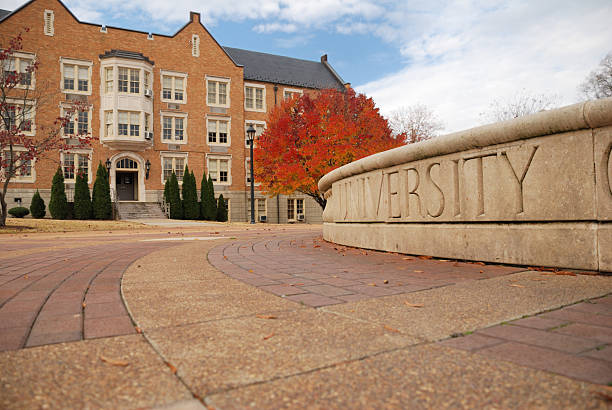The landscape of higher education is undergoing a profound transformation. As technology evolves, societal needs shift, and global circumstances change, universities and colleges are redefining how they approach teaching, learning, and research. This article delves into the trends that are shaping the future of university campuses, focusing on the innovations and transformations that will impact students, faculty, and the way higher education institutions operate in the coming decades.
1. The Rise of Hybrid and Online Learning
One of the most significant trends in higher education is the move toward hybrid and online learning. The COVID-19 pandemic acted as a catalyst for a rapid shift to virtual classrooms. Though the immediate crisis has passed, many educational institutions have embraced online learning as a viable option for students who may not be able to attend in person.
Hybrid learning, where students can attend classes both in person and online, is now a permanent feature at many universities. This mode of learning provides flexibility for students who may have personal, professional, or geographical constraints. Moreover, online education allows universities to reach a global audience, enabling them to offer courses to students across the world.
The Future of Hybrid Learning:
- Expect more personalized learning paths, where students can choose the combination of in-person and online classes that best suits their needs.
- Universities will invest in advanced technologies such as Artificial Intelligence (AI) and Virtual Reality (VR) to create more immersive and interactive online experiences.
2. Integration of Technology and Artificial Intelligence (AI)
The impact of AI and technology on higher education is already being felt, and this trend is expected to accelerate. AI can be used for a variety of purposes, including personalized learning experiences, predictive analytics, administrative efficiency, and even grading. AI can analyze vast amounts of data to help faculty identify students who may be at risk academically, ensuring that interventions are made before students fall behind.
AI can also be used to improve the learning experience for students. For example, virtual teaching assistants powered by AI can help students with homework and provide real-time feedback. This allows for a more customized educational experience where students can learn at their own pace, with content adjusted to their individual strengths and weaknesses.
AI-Powered Innovations:
- Personalized learning plans based on data analytics.
- Virtual teaching assistants and AI tutors available 24/7.
- Administrative tasks such as admissions, financial aid, and scheduling handled more efficiently.
3. Interdisciplinary Learning and Collaboration
As the world becomes increasingly complex, interdisciplinary education is gaining traction. In the future, students will no longer be confined to studying within traditional academic disciplines. Instead, universities will encourage students to engage in interdisciplinary programs that combine knowledge from various fields. This could include blending technology with humanities, science with business, or arts with engineering.
Collaborative learning, where students from different disciplines work together on projects, will be a hallmark of the future university experience. These collaborations will not only reflect the realities of the modern workplace but will also foster a deeper understanding of how different areas of knowledge intersect and influence each other.
Examples of Interdisciplinary Programs:
- A program that combines computer science with psychology to create more effective mental health apps.
- A partnership between business and environmental studies to tackle issues like sustainability.
4. Sustainability and Green Campuses
The emphasis on sustainability is another significant trend shaping university campuses. With the growing awareness of climate change and environmental degradation, universities are becoming more committed to sustainability, both in terms of the curriculum and campus operations.
Universities are investing in sustainable infrastructure, such as energy-efficient buildings, green roofs, and solar power systems. They are also adopting sustainable practices in everyday campus life, including waste reduction, water conservation, and sustainable food sourcing. Many universities are now offering programs focused on environmental science, sustainability, and climate policy to train the next generation of environmental leaders.
Sustainability Initiatives:
- Universities are incorporating sustainability into their curricula across disciplines, ensuring students understand the environmental impact of their chosen field.
- Campuses are increasingly being designed with green technologies, such as renewable energy sources and sustainable construction materials.
5. Globalization and International Collaboration
In the future, universities will continue to foster a global perspective, preparing students to work in an interconnected world. International collaboration between universities, faculty, and students will be a key driver of innovation and knowledge sharing.
This globalization trend will lead to an increase in study abroad programs, joint research projects, and international internships. Students will be able to engage with global issues, collaborate with peers from different cultural backgrounds, and experience different educational systems.
Globalization in Higher Education:
- Universities will form strategic partnerships with institutions around the world to offer joint degrees and research opportunities.
- A more diverse student body will emerge as universities recruit internationally.
6. The Importance of Mental Health and Wellbeing
There is growing recognition that mental health is a critical component of academic success. Universities are increasingly focusing on providing mental health support to students. The pressures of academic performance, social life, and the transition to adulthood can take a toll on students’ mental health, and universities are responding by offering counseling services, mental health workshops, and wellness programs.
In the future, campuses will likely have more comprehensive mental health services, which could include on-demand counseling, peer support networks, and mindfulness programs. Universities will also encourage a culture of openness surrounding mental health, reducing stigma and ensuring that students feel comfortable seeking help when needed.
Mental Health Initiatives:
- The creation of wellness centers that provide holistic support, including physical, mental, and emotional well-being.
- Integration of mental health education into the curriculum to raise awareness and reduce stigma.
7. The Role of Lifelong Learning
The need for continuous learning will be a hallmark of the future job market. In a rapidly changing world, individuals will need to constantly update their skills and knowledge to remain competitive. This has led to the rise of lifelong learning programs at universities, which allow people to continue their education long after they graduate.
Lifelong learning programs will offer flexible courses that can be taken at any point in an individual’s career. These programs will cater to working professionals who want to upskill or reskill in response to changes in their industries. Universities will offer certificates, micro-degrees, and short courses to help learners stay current with new technologies, practices, and trends.
Lifelong Learning Trends:
- Universities will offer a broader range of modular and stackable credentials, allowing students to learn at their own pace.
- Partnerships between universities and employers will ensure that education is aligned with the demands of the labor market.
FAQs About the Future of Higher Education
- Will hybrid learning replace traditional in-person classes? No, hybrid learning is likely to complement traditional in-person education rather than replace it. It offers flexibility, but many students and faculty still value face-to-face interaction for certain aspects of learning.
- How will artificial intelligence change the classroom experience? AI will enable more personalized learning experiences, with AI-driven tutors and virtual assistants helping students progress at their own pace, and teachers using AI to streamline administrative tasks.
- What are the most significant challenges facing universities in the future? Universities will face challenges such as maintaining accessibility, ensuring that technology does not replace human interaction, and addressing the rising cost of education.
- How will sustainability impact university campuses? Universities will continue to invest in green technologies, promote environmental awareness, and incorporate sustainability into curricula and campus operations.
- Will international students still play an important role in universities? Yes, globalization will continue to be a key factor in higher education. Universities will encourage more international collaboration and offer more opportunities for global learning experiences.
- How can universities support mental health in the future? Universities will offer more mental health resources, promote awareness, and create a supportive campus culture that encourages students to seek help when needed.
- What is the future of lifelong learning in higher education? Lifelong learning will become a central feature of higher education, with universities offering flexible, short-term courses and certifications that cater to working professionals and those looking to upskill.
Conclusion
The future of higher education is an exciting and dynamic landscape, shaped by technological advancements, evolving societal needs, and a globalized world. As universities adapt to these changes, they will continue to offer more personalized, flexible, and accessible education options for students of all ages. The integration of technology, sustainability, interdisciplinary learning, and a focus on mental health will all play crucial roles in shaping the campuses of tomorrow.
While the future may present challenges, it also offers immense opportunities for innovation and growth in the higher education sector. Universities that embrace these changes and remain agile in the face of transformation will be well-positioned to serve the needs of students, faculty, and society as a whole.
Key Takeaways
- Hybrid and online learning will become more personalized, giving students the flexibility to choose how and when they learn.
- Technology, especially AI, will play a significant role in enhancing the educational experience for both students and faculty.
- Interdisciplinary programs and global collaborations will prepare students for the complexities of the modern world.
- Sustainability will become a core focus for universities, impacting everything from infrastructure to curricula.
- Mental health and well-being will be prioritized, with universities offering more comprehensive support for students.
- Lifelong learning will be essential for career success, with universities offering flexible, on-demand courses for professionals.

